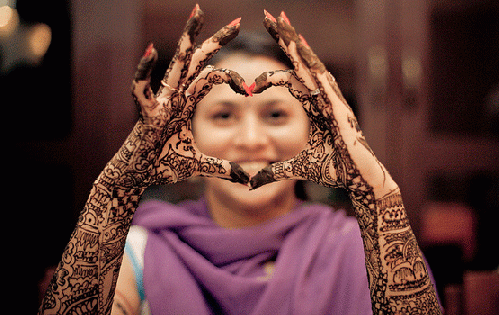Photo by Abhinay Omkar / Flickr.
Hinduism has a beautiful myth about the origins of love. In the beginning, there was a superbeing called Purusha. This being was without desire, craving, fear, or indeed the impulse to do anything at all--since the universe was already perfect and complete.
Then the creator Brahma took out his divine sword and split Purusha in two. Sky became separate from earth, darkness from light, life from death, male from female. Each of these set off passionately to reunite with its severed half.
As humans, we too are seeking unity, and love is the word we use for that search.
These days we tend to focus on the romantic and sexual elements of the process. The signs of this are everywhere: Millions of people use online dating sites each month in search of romantic partners. Advertisers exploit our love affair with love to sell everything from aftershave lotion to sports cars. And Hollywood jerks our heart strings with blockbuster romantic adventures.
A visitor from another planet might think that we earthlings--and Americans in particular--were obsessed with chasing love. If you asked the sages of ancient India, however, they'd probably say that love is not what we're actually chasing. Instead, we pursue the intense but fleeting emotional high of "falling in love," which generally doesn't last very long.
So how do we keep the life-giving flame of love alive? The ancient thinkers of India, who devoted a great deal of attention to this problem, recognized and honored the power of sex and romance to jump-start our flagging emotions. But the important question for them was, where do we go from there? How do we harness the intoxicating power of falling in love to create a happiness that endures even after the initial flame dies away?
These philosophers began pondering this topic during Vedic times in the centuries before Christ and further developed their ideas during the great revival of bhakti yoga, or the path of divine love, in the 15th century and beyond.
They taught that love consists of a series of stages through which an individual can climb. The lower stages on love's journey aren't necessarily supposed to go away as one gets more enlightened--however, remaining stuck at the lowest rung can cause a lot of frustration and sadness.
The important thing is that we keep climbing love's ladder. As the 19th century Hindu apostle to America, Swami Vivekananda, put it, "If one would expand, he must love, and when he ceases to love he dies."
Here's a look at the five stages of love as the Hindus see them:
1. "Kama," or sensory craving
At first, the desire to merge gets expressed through physical attraction, or kama. Technically speaking, kama means "craving for sense objects," but it is usually translated as sexual desire.
(Note: You can view every article as one long page if you sign up as an Advocate Member, or higher).





